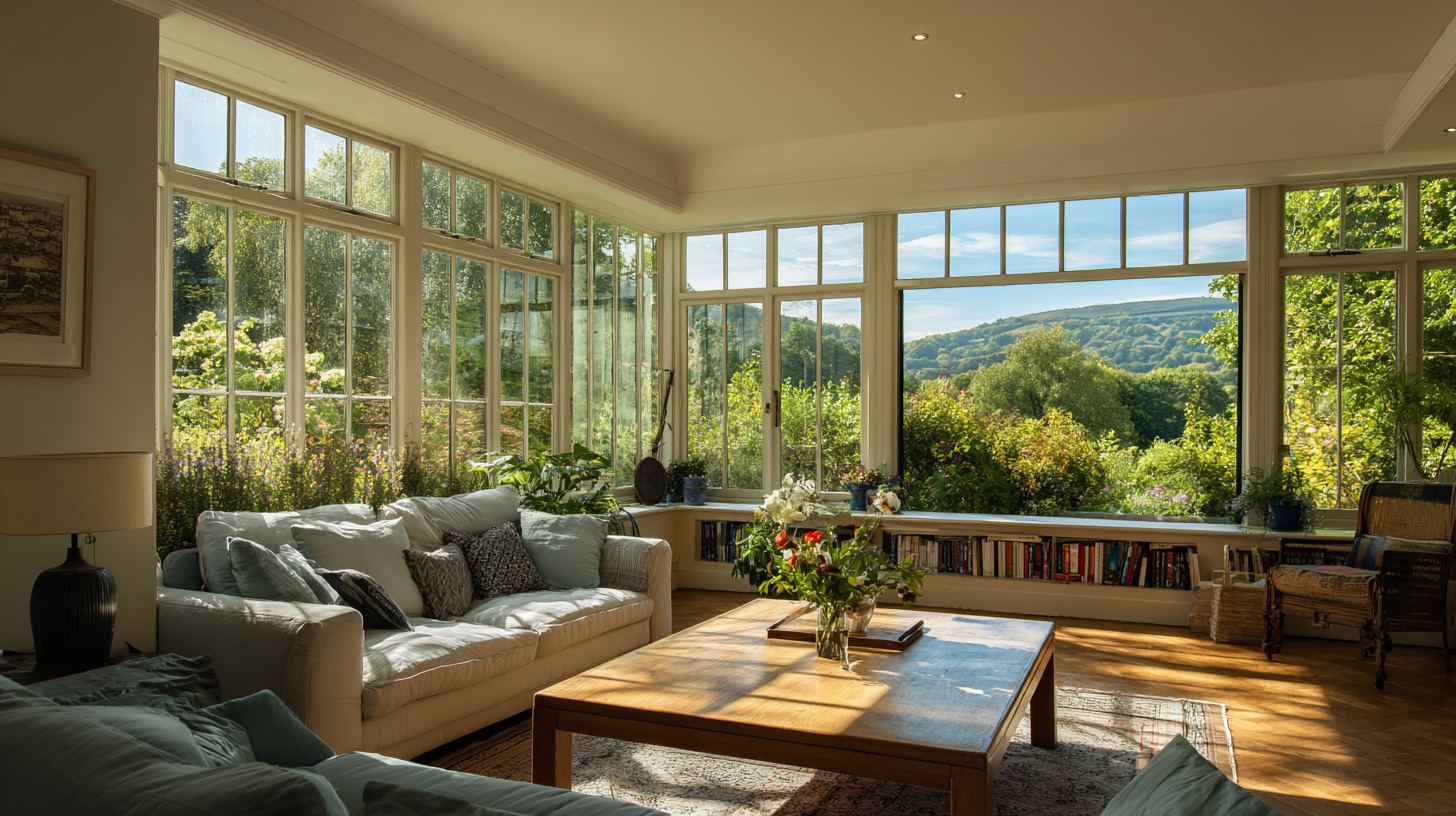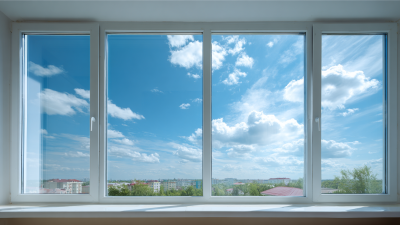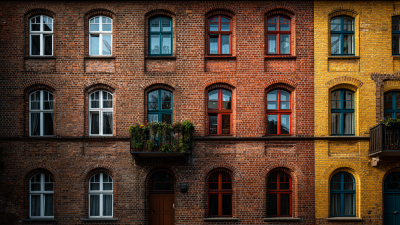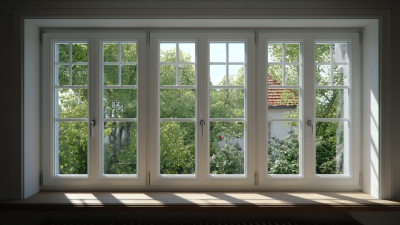- Toronto +1 (416) 633-5921
- Burlington +1 (905) 581-4015
- Ottawa +1 (613) 731-6224
In the pursuit of sustainable architecture, the incorporation of wide windows has emerged as a pivotal design element that enhances both natural light and energy efficiency. According to a report by the American Institute of Architects, optimizing daylight in buildings can reduce energy costs by up to 25% annually. This is particularly significant in residential and commercial spaces, where natural light not only improves occupant well-being but also minimizes reliance on artificial lighting.

Furthermore, studies published by the U.S. Department of Energy highlight that strategically placed wide windows can help regulate indoor temperatures, ultimately leading to substantial reductions in heating and cooling expenses. As architects and builders continue to prioritize energy-efficient designs, the adoption of wide windows plays a critical role in achieving higher sustainability standards while fostering healthy living environments.
Hence, understanding the multifaceted benefits of wide windows is essential for modern architectural practices.
Wide windows are an exceptional architectural feature that can enhance the ambiance of any space while promoting energy efficiency. One popular type is the slider window, which features large glass panels that can be easily opened for ventilation. This design allows natural light to flood the interior, reducing reliance on artificial lighting during the day. Additionally, slider windows can provide unobstructed views of the outdoors, creating a seamless connection between the indoor and outdoor environments.
Another effective option is the picture window. These fixed windows are designed to maximize the amount of light entering a room without compromising energy efficiency. Since they do not open, picture windows can be constructed with advanced glazing technologies that improve insulation, keeping homes warmer in the winter and cooler in the summer. Furthermore, bay and bow windows offer a unique twist, extending outwards from the building's structure. This design not only increases the natural light entering the room but also adds a cozy nook for enjoyment, further enhancing both aesthetics and functionality.

When considering the placement of wide windows in your home, it’s essential to maximize natural light and energy efficiency. According to a study from the National Renewable Energy Laboratory, strategically placed windows can reduce energy costs by up to 30% by utilizing passive solar heating in the winter and minimizing heat gain during the summer. South-facing windows tend to capture the most sunlight, making them ideal for living areas where warmth is desired during cooler months.
Tip: When deciding on window placement, consider the seasonal sun path. Placing wide windows on the south and west sides of your home can significantly enhance natural light intake while still allowing for effective shading solutions in the summer.
Additionally, leveraging overhangs or awnings can help control light exposure; a study published by the American Institute of Architects suggests that these features can effectively reduce cooling costs by about 17% when properly designed. By choosing the right placements and incorporating these elements, homeowners can enjoy bright, airy spaces without sacrificing energy efficiency.
Tip: Always consult with a design professional to assess your specific site conditions and obtain a layout that maximizes both aesthetics and functionality.
This bar chart illustrates the potential energy savings and natural light increase achieved by installing wide windows in residential spaces. The data reflects energy efficiency improvement percentages and lighting enhancement ratings based on a survey of homeowners.
When it comes to maximizing natural light in a space, both materials and design choices play a crucial role. Wide windows are often the first consideration; however, the frame materials used can significantly influence light quality and energy efficiency. For instance, using low-emissivity (low-E) glass can minimize heat loss while still allowing a high amount of sunlight to enter. Additionally, selecting frames made from thermally efficient materials, such as fiberglass or vinyl, can further enhance insulation, ensuring that the light-filled environment remains comfortable year-round.

Designing the layout of windows also matters. Architecturally, placing wide windows on south-facing walls allows for the most sun exposure, while overhangs or awnings can provide shade during the hottest parts of the day, thus reducing glare while still promoting ample light entry. Moreover, the integration of reflective surfaces within the space can help distribute natural light more evenly, facilitating an invigorating ambiance. Together, thoughtful material selection and strategic design approaches not only illuminate spaces beautifully but also contribute to overall energy efficiency, making them an essential aspect of modern architecture.
Wide windows offer a plethora of benefits, particularly in enhancing energy efficiency and maximizing the use of natural light within a space. One effective technique to enhance energy efficiency is implementing low-emissivity (low-E) coatings on window glass. These coatings reflect heat back into the room during colder months while keeping excess heat out during summer, providing a comfortable indoor environment year-round. Additionally, using double or triple glazing can significantly improve thermal resistance, reducing the need for artificial heating and cooling, consequently lowering energy bills.
Another method to boost energy efficiency with wide windows is the strategic placement and orientation of these windows. By positioning them to capture the most sunlight, homeowners can utilize passive solar heating. This involves placing wide windows on south-facing walls to maximize sun exposure during winter while incorporating overhangs or shades to minimize heat gain during the warmer months. Such design choices not only enhance the natural lighting of a space but also contribute to a more sustainable living environment, allowing for reduced reliance on electrical lighting and climate control systems.
| Aspect | Data |
|---|---|
| Average Natural Light Increase (%) | 40% |
| Potential Energy Savings Annually ($) | $200 |
| Typical Reduction in Lighting Costs (%) | 25% |
| Increase in Property Value (%) | 15% |
| Popular Window Types for Energy Efficiency | Low-E Glass, Triple Glazing |
| Commonly Recommended Window Sizes (ft²) | 24 x 48, 36 x 60 |
Maintaining wide windows is essential for maximizing their benefits of natural light and energy efficiency. Regular cleaning is crucial, as dirt and grime can block sunlight and reduce the window's effectiveness. Use a gentle glass cleaner or a vinegar-water solution to keep the glass sparkling clean. Don’t forget to address the frames and sills, as they can accumulate dust and debris. A soft cloth is ideal for these areas, ensuring a thorough clean without scratching any surfaces.
In addition to cleaning, it's important to inspect the seals and weather stripping around wide windows periodically. Over time, these seals can wear out, leading to drafts and energy loss. If you notice any gaps or deterioration, consider replacing the weather stripping to maintain optimal insulation. Furthermore, check for condensation between double-glazed panes, as this may indicate a failed seal, which should be addressed promptly to preserve energy efficiency. Regular maintenance will not only keep your wide windows looking great but also enhance their performance and longevity.






Call us one of our 3 offices across Ontario, Canada
Thanks for contacting us!
We'll get back to you as soon as possible.